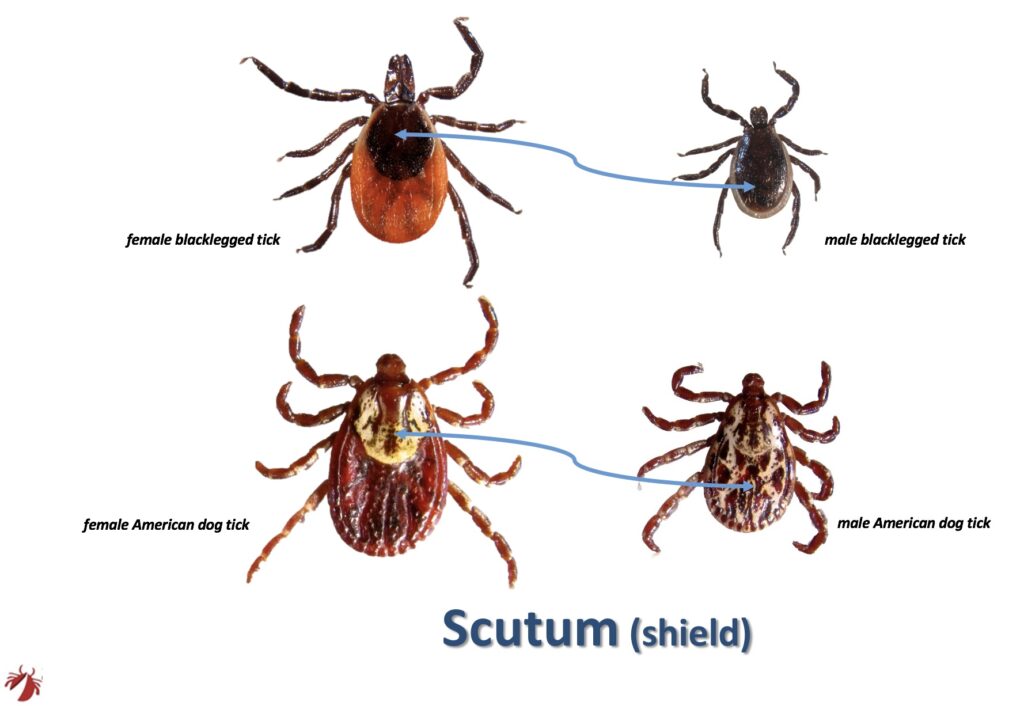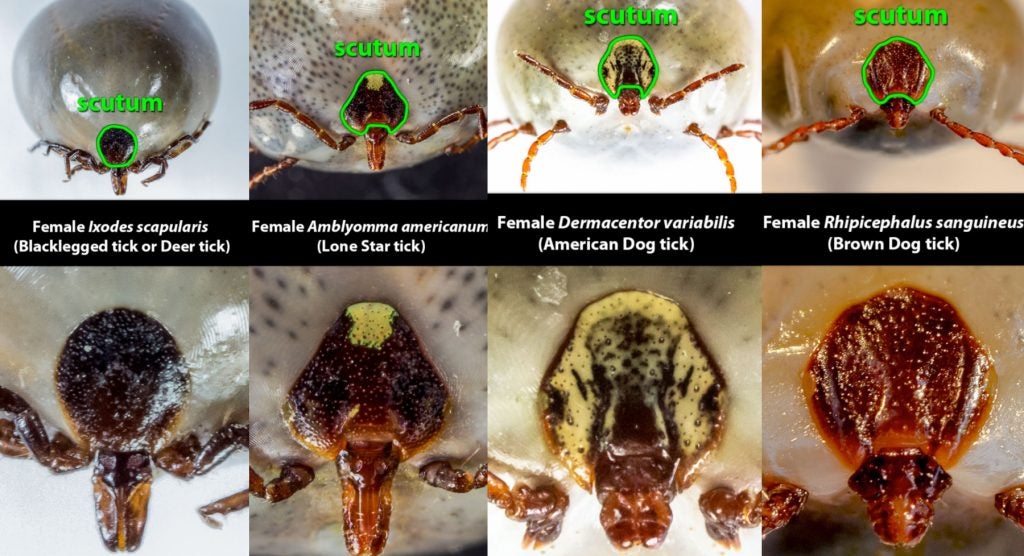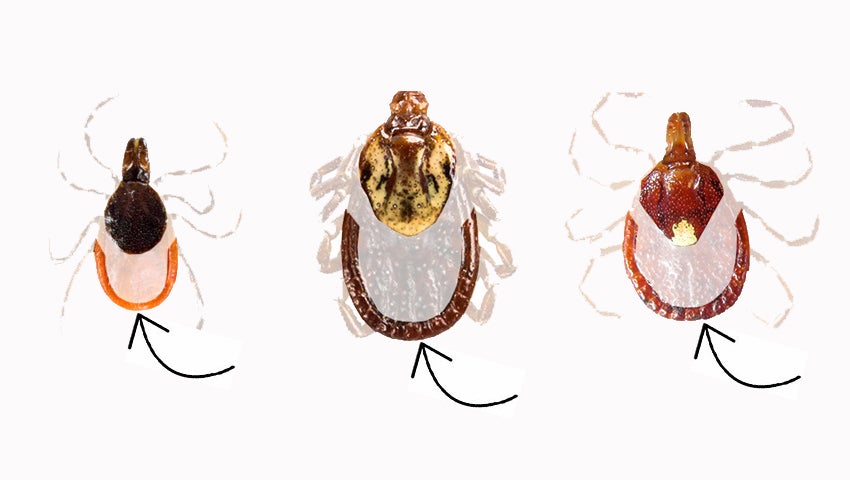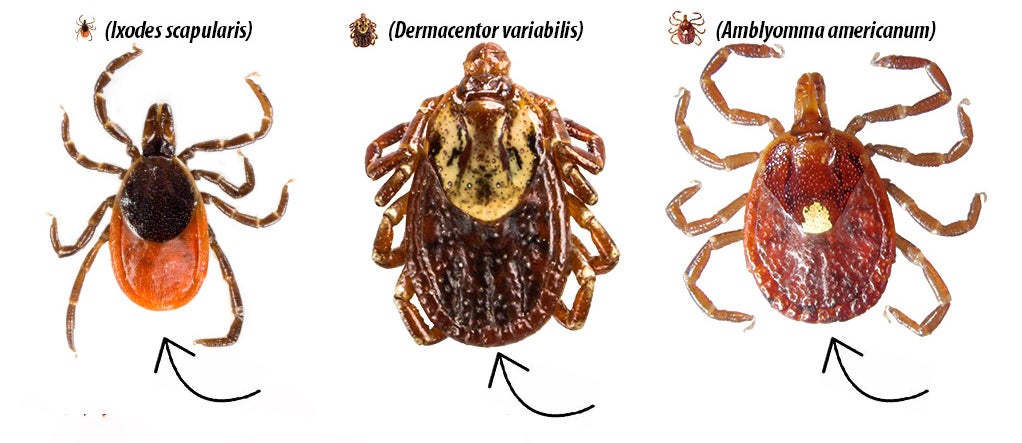Ever wonder what a tick expert looks at first when identifying a tick? If you know what we’re looking for, it will help you identify ticks, too, and also help you take a better tick picture to send to TickSpotters. As a citizen scientist, we encourage you to become familiar with three important parts of a tick’s anatomy, and be sure that your picture shows those parts clearly. Let’s get started. Here are three areas to look for in adult stage ticks:
Scutum (Shield)


The scutum never changes in size
All hard ticks have a scutum or “shield” on their top side. So, start by looking at the top side of the tick. In adult females, the scutum covers the front 1/3 of the body but in males it covers the entire body. The scutum lacks elasticity and never changes in size, even as the female tick engorges. Nymph and larval stage ticks also have a scutum covering the front 1/3. (review 2 slides in the gallery)
The scutum of adult stage ticks has somewhat unique characteristics that help tick experts distinguish one type of tick from another. We look for specific markings and coloration, shape, and the presence or absence of “eye spots”.

Mouthparts
Ticks have 2 distinct body regions, the head (capitulum) and the body (idiosoma). The most distinctive components of the head are the palps and toothed hypostome, collectively called mouthparts. When a tick attaches to a host, the palps fold back, exposing the hypostome (a tick’s mouth). A pair of chelicerae (pronounced chel’icery) are located at the tip of the hypostome; the chelicerae work like a reciprocating saw to cut a hole in the skin into which the tick sinks its hypostome lined with rows of backward pointing barbs, which help hold the tick tightly in the skin while it blood feeds. Some ticks (notably blacklegged ticks and lone star ticks) have longer, straight mouthparts, while others have shorter straight (American dog ticks, Rocky Mountain wood ticks, Pacific Coast ticks) or shorter triangular-shaped (brown dog ticks) palps. The length of the mouthparts is one factor contributing to how hard or easy it is to remove different types of ticks. The shape and length of mouthparts can be a useful aid in tick identification but unfortunately, mouthparts often break off (because of the backward pointing barbs on the hypostome) and are left in the skin.
Festoons
Festoons are small areas separated by short grooves located on the back margin of the tick. While their function is not known, the presence of festoons helps distinguish all other types of ticks from Ixodes ticks, which lack festoons.
Other Characteristics to Consider
In addition to the scutum, mouthparts, and festoons, TickExperts also use the most likely location of the tick encounter and the time of year to help identify ticks. Different types and life stages of ticks have their own typical season of activity, and some types have limited geographic distributions, too. Because ticks can move great distances when attached to hosts, we ask for a recent travel history to help guide our identification decision. Our Tick Activity map combines both season and location information to predict the most types of ticks most likely to be encountered across North America.


